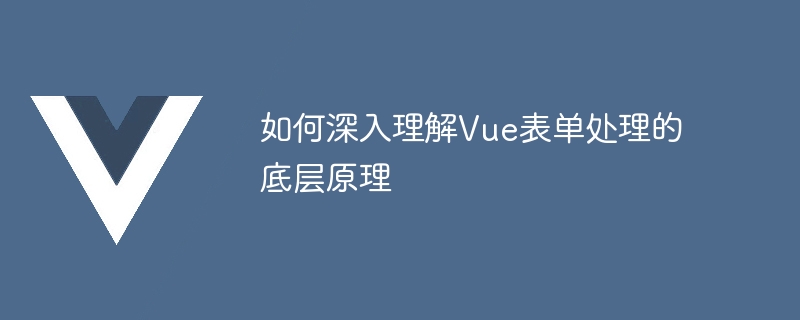

How to deeply understand the underlying principles of Vue form processing
Introduction:
Vue is a popular JavaScript framework for building user interfaces. It provides powerful data binding capabilities and a flexible component-based development method, and is widely used in Web development. Forms are an integral part of web applications, and Vue provides many convenient ways to process form data. This article will focus on the underlying principles of Vue form processing to help readers deeply understand the working principle of Vue forms.
1. Vue form binding principle
<template>
<div>
<input v-model="message" type="text">
<p>{{ message }}</p>
</div>
</template>
<script>
export default {
data() {
return {
message: ''
}
}
}
</script>In this example, when the user enters content in the input box, the value of the message will As it changes, the text on the page will update.
<template>
<div>
<form v-on:submit.prevent="submitForm">
<input v-model="message" type="text">
<button type="submit">提交</button>
</form>
<p>{{ message }}</p>
</div>
</template>
<script>
export default {
data() {
return {
message: ''
}
},
methods: {
submitForm() {
// 处理表单提交逻辑
console.log(this.message);
}
}
}
</script>In this example, when the user clicks the submit button, the submitForm method will be called and the content in the input box will be output.
2. The underlying principle of Vue form processing
3. Code Example
The following is a simple code example that demonstrates the underlying principle of Vue form processing:
<template>
<div>
<form v-on:submit.prevent="submitForm">
<input :value="message" @input="updateMessage" type="text">
<button type="submit">提交</button>
</form>
<p>{{ message }}</p>
</div>
</template>
<script>
export default {
data() {
return {
message: ''
}
},
methods: {
submitForm() {
console.log(this.message);
},
updateMessage(event) {
this.message = event.target.value;
}
}
}
</script>In this example, we bind it through :value The value of the input box is determined, the input event is monitored through @input, and the message value in data is updated through the updateMessage method. When the user clicks the submit button, the submitForm method will be called and the contents of the input box will be output.
Conclusion:
By deeply understanding the underlying principles of Vue form processing, we can better understand the working principle of the Vue framework and effectively develop and debug Vue forms. I hope this article can provide some help and inspiration to readers.
The above is the detailed content of How to deeply understand the underlying principles of Vue form processing. For more information, please follow other related articles on the PHP Chinese website!




